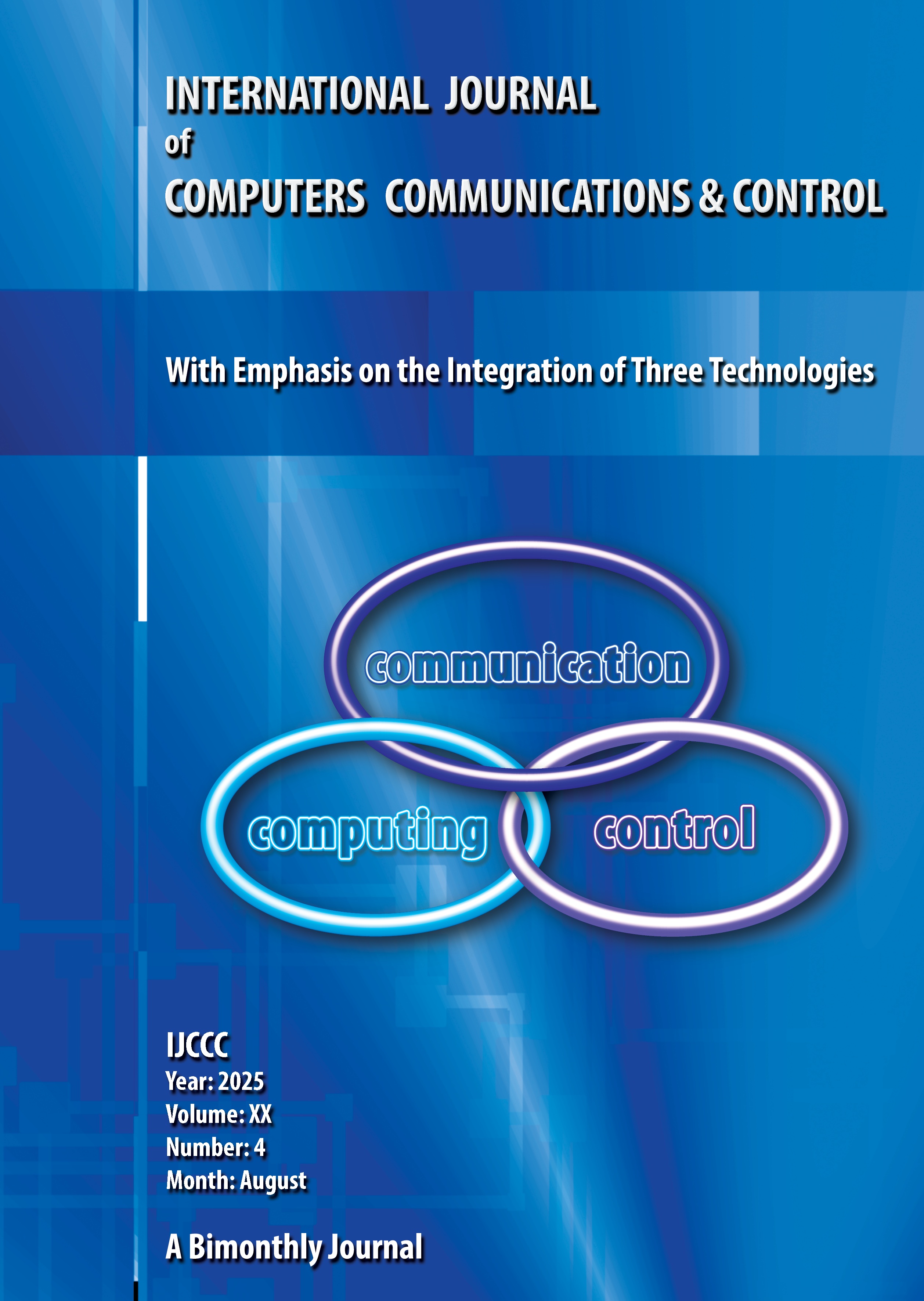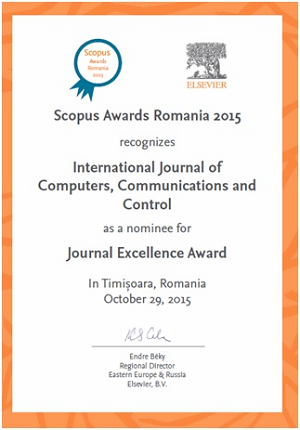On equivalence between Takagi-Sugeno-Kang fuzzy systems with triangular membership functions and Neural Networks with ReLU activation in two or more dimensions
DOI:
https://doi.org/10.15837/ijccc.2025.4.7127Keywords:
fuzzy sets, fuzzy systems, neural networks, ReLU activation, Takagi-Sugeno-Kang fuzzy systemsAbstract
We prove the equivalence between Takagi-Sugeno-Kang (TSK) fuzzy systems and neural networks with ReLU activation function in two or more dimensions. The TSK fuzzy systems considered will have tetrahedral membership functions for their antecedents and singleton outputs. We show an example of a fuzzy system that is locally equivalent to a neural network based on the proposed method, and we discuss the potential to provide a local analysis to explain the decision process of neural networks.
References
Bede, B.: Mathematics of Fuzzy Sets and Fuzzy Logic. Springer (2013) https://doi.org/10.1007/978-3-642-35221-8
Bede, B., Kreinovich, V., Toth, P.: Equivalence between 1-d takagi-sugeno fuzzy systems with triangular membership functions and neural networks with relu activation. In: North American Fuzzy Information Processing Society Annual Conference. pp. 44-56. Springer (2023) https://doi.org/10.1007/978-3-031-46778-3_5
Bede, B., Kreinovich, V., Toth, P.: Equivalence between tsk fuzzy systems with triangular membership functions and neural networks with relu activation on the real line. In: North American Fuzzy Information Processing Society Annual Conference. Springer (2024) https://doi.org/10.1007/978-3-031-46778-3_5
Bishop, C.M.: Neural networks and their applications. Review of scientific instruments 65(6), 1803-1832 (1994) https://doi.org/10.1063/1.1144830
Cao, H., Tan, C., Gao, Z., Xu, Y., Chen, G., Heng, P.A., Li, S.Z.: A survey on generative diffusion models. IEEE Transactions on Knowledge and Data Engineering (2024) https://doi.org/10.1109/TKDE.2024.3361474
Goodfellow, I., Bengio, Y., Courville, A.: Deep learning. MIT press (2016)
Jang, J.S.: ANFIS: adaptive-network-based fuzzy inference system. IEEE Transactions on Systems, Man, and Cybernetics 23(3), 665-685 (1993). https://doi.org/10.1109/21.256541 https://doi.org/10.1109/21.256541
Mamdani, E.H., Assilian, S.: An experiment in linguistic synthesis with a fuzzy logic controller. International journal of man-machine studies 7(1), 1-13 (1975) https://doi.org/10.1016/S0020-7373(75)80002-2
Mencar, C., Alonso, J.M.: Paving the way to explainable artificial intelligence with fuzzy modeling: tutorial. In: Fuzzy Logic and Applications: 12th International Workshop, WILF 2018, Genoa, Italy, September 6-7, 2018, Revised Selected Papers. pp. 215-227. Springer (2019) https://doi.org/10.1007/978-3-030-12544-8_17
Mundhenk, T.N., Chen, B.Y., Friedland, G.: Efficient saliency maps for explainable ai. arXiv preprint arXiv:1911.11293 (2019)
Oh, S.J., Schiele, B., Fritz, M.: Towards reverse-engineering black-box neural networks. Explainable AI: interpreting, explaining and visualizing deep learning pp. 121-144 (2019) https://doi.org/10.1007/978-3-030-28954-6_7
Sugeno, M., Kang, G.: Structure identification of fuzzy model. Fuzzy sets and systems 28(1), 15-33 (1988) https://doi.org/10.1016/0165-0114(88)90113-3
Xu, F., Uszkoreit, H., Du, Y., Fan, W., Zhao, D., Zhu, J.: Explainable ai: A brief survey on history, research areas, approaches and challenges. In: Natural Language Processing and Chinese Computing: 8th CCF International Conference, NLPCC 2019, Dunhuang, China, October 9-14, 2019, Proceedings, Part II 8. pp. 563-574. Springer (2019) https://doi.org/10.1007/978-3-030-32236-6_51
Zadeh, L.A.: Fuzzy sets. Information and control 8(3), 338-353 (1965) https://doi.org/10.1016/S0019-9958(65)90241-X
Zámečiková, H., Perfilieva, I., Kosheleva, O., Kreinovich, V.: A natural extension of f-transform to triangular and triangulated domains necessitates the use of triangular membership functions. Proceedings of the 13th Conference of the European Society for Fuzzy Logic and Technology EUSFLAT, Riga, Latvia, July 21-25 (2025)
Zhao, W.X., Zhou, K., Li, J., Tang, T., Wang, X., Hou, Y., Min, Y., Zhang, B., Zhang, J., Dong, Z., et al.: A survey of large language models. arXiv preprint arXiv:2303.18223 (2023)
Additional Files
Published
Issue
Section
License
Copyright (c) 2025 Barnabas Bede, Peter Toth, Vladik Kreinovich

This work is licensed under a Creative Commons Attribution-NonCommercial 4.0 International License.
ONLINE OPEN ACCES: Acces to full text of each article and each issue are allowed for free in respect of Attribution-NonCommercial 4.0 International (CC BY-NC 4.0.
You are free to:
-Share: copy and redistribute the material in any medium or format;
-Adapt: remix, transform, and build upon the material.
The licensor cannot revoke these freedoms as long as you follow the license terms.
DISCLAIMER: The author(s) of each article appearing in International Journal of Computers Communications & Control is/are solely responsible for the content thereof; the publication of an article shall not constitute or be deemed to constitute any representation by the Editors or Agora University Press that the data presented therein are original, correct or sufficient to support the conclusions reached or that the experiment design or methodology is adequate.








